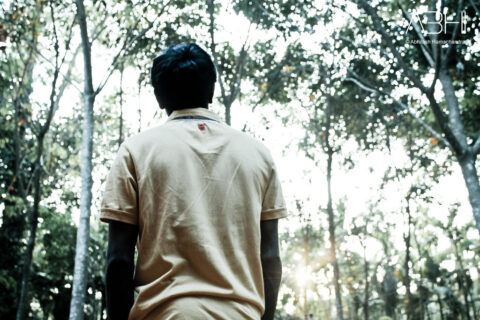Networks are fundamental to life, to liveliness and to livelihood. There is growing recognition of this fact. And at the same time, the frame through which one views networks has a lot to say about how one might be living out and into their potential, or not. For example, I still see people a bit enamored of “social network analysis” (SNA) in a way that concerns. It is the equivalent of pinning an insect to a board and dissecting it. The vitality of any living creature does not lie in understanding its “parts” alone, and pinning anything down does not allow “the observer” to see it in action, in its vitality. This is not to say that SNA cannot be helpful, but to keep in mind that anything frozen is not a true representation of life, and that the very observation of something changes it, as in living systems we are constantly engaged in the making “and bringing forth of worlds” through our interactions (see the work of the late Humberto Maturana) .

Which brings me to the use of “it” in referring to a network, or the idea of “building a network.” A network is not simply an it, it is an “us,” at least when we are referring to social and social-ecological webs. And a network is not simply a means to an end, a “so that,” if you will. Networks always “are” in some sense, in light of the myriad and often invisible connections that exist in our world. And as I have written before, the very nature of networks in terms of their patterns of connection and flow, has a lot to say about human and ecological health and resilience.
The use of “it,” which I certainly fall into, can create a degree of false and, in some cases, dangerous separation. A case could be made that much of what ails mainstream society and the human world is a severe case of distance and abstraction. As Andreas Weber has pointed out, this false separation in mainstream biological sciences can lead to the cutting off of something vital – our feelings and emotion! In The Biology of Wonder, Weber makes the case that far from being superfluous to the study of organisms (including social and and social-ecological networks), feelings (and I would add our bodies below the neck), are the very foundation of Life!
Which is why, increasingly, I am playing with full-bodied ways of engaging people in “network ways of thinking, doing and being” – at individual (internal to our selves – yes, we are networks!), group, and larger systemic scales. Whether it be poetry, music/song, meditation, storytelling, somatic practice, there is an apparent need to enlist people in a “poetic ecology” (in Weber’s words) of net work. This to me is key to helping to realize the regenerative potential of networks, and requires dedicated and deep practice.
What changes, what possibilities arise, when you shift towards “seeing” a given network as an “us” and an “as”?

originally published at IISC
Curtis Ogden is a Senior Associate at the Interaction Institute for Social Change (IISC). Much of his work entails consulting with multi-stakeholder networks to strengthen and transform food, education, public health, and economic systems at local, state, regional, and national levels. He has worked with networks to launch and evolve through various stages of development.
PLEASE DONATE to help Network Weaver continue in it’s mission to offer free support and resources to networks worldwide.
3 Comments
Comments are closed.

Thank you for sharing, Curtis! In the past, I used to make powerpoint presentations filled to the brim with neat network graphs, only to discover that they did not engage people. They merely overwhelmed them.
Gradually, I shifted to trying to engage people to experience networks ‘below the neck’. So now, Covid permitting, I ask people, How does it feel to be in a network? I invite them to participate in a simple exercise that is a variation of the exercise “Triangles” from the Systems Thinking Playbook. (on YouTube you can watch demo examples, e.g., https://www.youtube.com/watch?v=hE9XdaI56qw) .
Beautiful, Paul. And thanks for sharing and reminding about the “Triangles” exercise. I also like sharing from a long list of curated quotes about networks, connection, living systems, relationships, etc. and asking people what sensations and emotions they invoke. What draws them in, from a whole body perspective? And sharing stories and doing interpersonal resonance practice can also be such a rich practice, especially focused on times when we have been connected and felt a sense of belonging!
Sharing a list of quotes and asking people which ones resonate with them, is also a great idea, Curtis! For one thing, that could be done in online sessions, too. Whereas “triangles” requires people to be present in an offline setting.
Made me going over my collection of quotes again. One of my personal favourites is this one:
“The intent becomes one of understanding movement based on a deep respect for the web of activity and relationships that comprise the system. Physicist David Peat terms this “gentle action…involving extremey subtle actions that are widely distributed over the whole system.” The intent is not to push and pull, but rather to give form to what is unfolding.” – Margaret Wheatley (1992), Leadership and the new science, pp.110-111. “